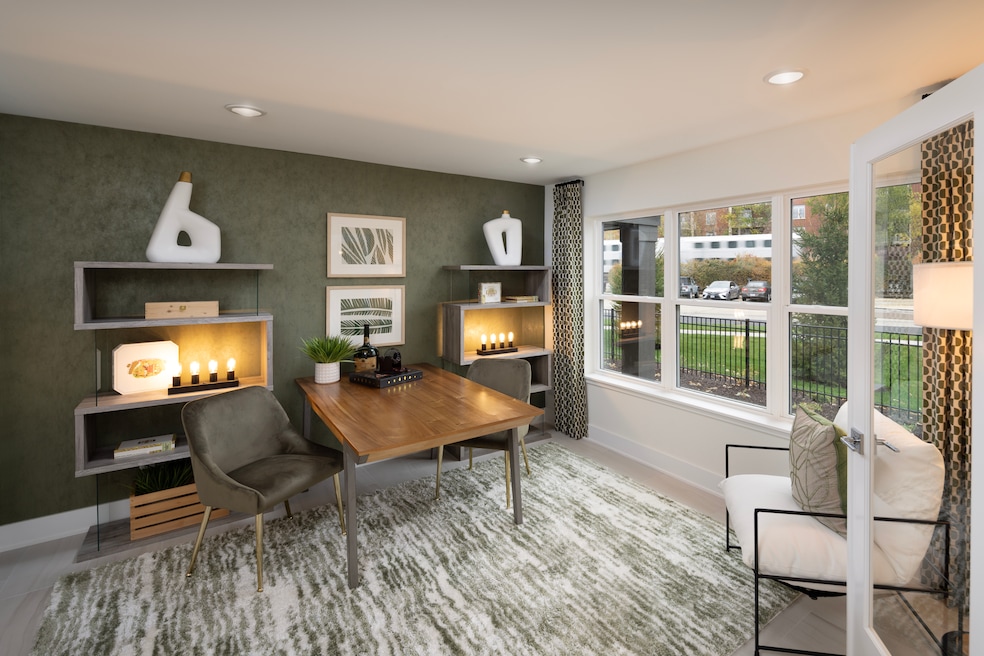Waves of return-to-office mandates this year have pushed many employees to abandon remote and hybrid schedules, leaving once-busy home workspaces unused.
That shift is expected to influence home design and prompt builders to rethink new construction layouts for more flexible, multiuse spaces rather than a dedicated home office with a healthy square footage — a trend that began during the COVID-era remote work boom and is now reversing.
Jeff Benach of Chicago-based homebuilder Lexington Homes said he has noticed about 30% of his buyers today have one person working from home, a percentage that’s not “too dissimilar” to before COVID.
It’s a stark difference compared to the height of the pandemic when Google search volume for the term “home office” leaped in March 2020 and experts expected the trend to stick, changing work forever.
Benach recalled that, between 2020 and 2022, he would often receive calls to see if an entry room in one of his townhouse layouts could be converted into a second office. That was in addition to an existing den already included in the floor plan.
Today, with some home offices collecting dust, space limitations and affordability have become key factors influencing how the real estate industry reimagines these areas on top of return-to-work orders.
“As we’re pinched financially, wasting a whole space for an office is sometimes prohibitive,” said Jenni Nichols, vice president of design at John Burns Research and Consulting.
“Builders being able to tuck in something like a niche, home tech space or right-sized office allows for potentially a smaller home that’s more affordable but still giving people what they need.”
Homes skew smaller and square footage becomes invaluable
New homes built in 2024 had a median square footage of 2,146, according to the U.S. Census Bureau, down from 2,299 in 2022. Homebuilders have delivered smaller homes to minimize costs and help with affordability, they say, as the prices of construction, materials and land increase.
“I’ve seen a lot of homebuilders respond to that demand of, ‘I need a formal workspace, but I don’t want to waste 100 square feet of my house,’” said Nichols in an interview with Homes.com.
Some buyers ditch the home office altogether to maximize space.
At a development in Morton Grove, Illinois, half of Lexington Homes’ buyers of its smaller townhouse floor plan opted to remove their den to expand their main living space, said Benach, swapping the formerly coveted home office.

Before the COVID-19 pandemic, home offices were relegated to a multipurpose space, such as a spare bedroom with a desk thrown in or a takeover of the kitchen island, Nichols said. Or on the other end of the spectrum: a more classic executive-style hideaway with wooden built-ins and a massive desk in the center in a larger home.
The new normal for home offices is much like hybrid work, said Nichols. It’s a mix between that classic and the flex.
On one end, at the pandemic’s onset, kitchen islands and breakfast nooks turned into makeshift workplaces. Builders quickly responded by giving homeowners more options.
National builder KB Home offered a “KB Home Office” package in August 2020, rolled out to make “working from home easier and more productive” with built-in table and storage, shelving and upgraded electricals, according to the company. That package is no longer available today.
Homeowners want more storage and resale value from small-footprint homes
Today’s home offices take bits from all of the above, according to Nichols. She calls them “tech niches” or “pocket offices” and points to a survey conducted by John Burns in 2022 that found 65% of homeowners preferred space efficiency for a place to get work done.
Part of that demand comes from the desire to use the same space for different functions, such as an extra bedroom and storage, said Laura Sterr, vice president of marketing and sales for Texas-based builder Stylecraft.
The homebuilder has seen buyers forgo the flex space or study altogether, preferring an additional bedroom to maximize square footage, improve resale value and increase storage with a closet.
"At the end of the day, if something happens, most people don't have a big desktop computer any longer. They have laptops, they can go work on the kitchen island," Sterr told Homes.com "But if you need a bedroom, nobody wants to sleep on the couch long-term."
As for those buyers purchasing larger, higher-priced homes, a dedicated home office remains a luxury they expect.
Chicago-based designer Jacklyn Graniczny plans offices for her custom clients, such as one couple where both partners work from home. She located their two separate spaces near one another on the main level. Even empty-nesters see the amenity as desirable, whether working or not, she says.
“Right now I have a client that's retired and we're doing a very gorgeous, over-the-top home office,” said Graniczny. “I feel like most of my clients are entrepreneurs or C-suite, so I feel like most of them do want that home office.”
